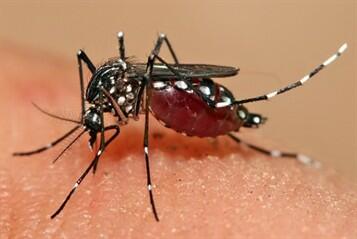
LSTM’s seminar series continued last week with a presentation from Dr Paulo Pimenta from the Centro de Pesquisas René Rachou, Belo Horizonte, Brazil. His talk, entitled: Variation in vector competence of field populations of Aedes aegypti amd Aedes albocpictus, was introduced by LSTM’s Dr Alvaro Acosta-Serrano.
Dr Pimenta began by looking at dengue fever around the world and where there were large numbers of cases before looking at the recent history of the virus in Brazil. Between 2009 and 2014 there have been 3.2 million cases in Brazil, resulting in 800 deaths. The work carried out by Dr Pimenta and his team focuses on the Brazilian city of Belo Horizonte which has a population of ~1.5 million and in 2013 there were 300,000 reported cases, equating to 20% of the population of the city contracting the virus in that season.
He went on to explain how dengue is transmitted by the bite of an infected mosquito, in Brazil mainly the Aedes aegypti and Aedes albocpictus, and how his group are examining the vector competence, or the ability of the insect to carry, replicate and transmit the virus. They have found, by measuring the amount of mosquitoes with dengue in the head (i.e. salivary glands), that there are different levels of vector competence across the same species in the nine different regions into which the city is split. The methodology for this is that mosquitoes are collected from traps throughout all the districts, identified for species and examined to see if they are capable of transmitting the disease by separating the head from the body and analysing it for the presence of viral RNA.
Specimens were collected throughout the dengue season, which is between October and May in Brazil, and data for four years has been compared to the number of recorded cases of dengue for the same period. Dr Pimenta explained that although both mosquito species can be commonly found throughout, A. albopictus is usually in fewer numbers due to the two species preferring different environments.
Dr Pimenta also described that A. albopictus was more readily found in low endemic seasons and that when cases in humans increased during high endemic seasons that there were far more A. aegypti trapped. He concluded by saying that this is an indicator that as a vector A. aegypti appears more competent, but that A. albopictus also needs to be taken into account given that it appears to maintain the prevalence of the virus in humans during low endemic seasons, and that more work should be carried out to understand this further.